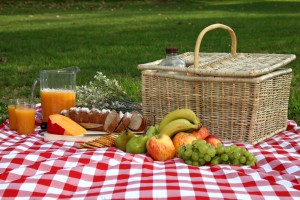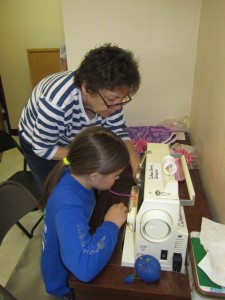Summer Picnic Safety Tips
Summer months are a great time for picnicking with family and friends. Flies and other insects can be rather annoying, but the “bugs” you can’t see can be extremely harmful. Bacteria love the warm humid weather and grow more quickly in the summer than any other time of the year. The number of people who get sick during the hot months of the year is much greater. So read over the following tips to beat bacteria at your summer picnic.
Keep it Clean!
■ Find out if your picnic destination has a source of safe drinking water. If not, bring water or moist towelettes for cleaning hands and surfaces.
■ Always wash your hands with warm, soapy water for 20 seconds before and after handling food. Unwashed hands are a major cause of foodborne illness. Use moist towelettes if hand-washing facilities are not available.
■ Be sure raw meat and poultry are wrapped securely to prevent their juices from cross-contaminating other foods in the cooler.
■ Pack enough clean utensils for both eating and serving food. Don’t use the same utensil or platter for raw and cooked meat and poultry. Disposable plates and utensils help prevent cross-contamination.
■ Keep foods covered to prevent insects from enjoying your lunch!
Keep Cold Foods Cold!
■ Keep perishable foods cool by transporting them in an insulated cooler with plenty of ice or frozen gel packs. Perishable foods include meat, poultry, seafood, eggs, dairy products, pasta, rice, cooked vegetables, and peeled and cut fruits and vegetables.
■ Pack the cooler just before leaving home. Foods chilling in your refrigerator should be placed directly in your cooler with ice or frozen gel packs.
■ Avoid frequently opening coolers containing perishable food. It’s a good idea to store beverages and perishable foods in separate coolers.
Keep the cooler in an air-conditioned vehicle during travel and in the shade at the picnic site.
Some other resources to help or share:
UF IFAS Food Safety Factsheet for Potlucks
Fun Picnic Ideas to Try this Summer
Do you have a passion or skills that you would like to pass on to the next generation of parents, employees, civic leaders, and decision makers? 4-H needs caring adults from a wide variety of backgrounds, skills and experiences. For more information, contact your local UF IFAS Extension Office, or visit http://florida4h.org/volunteers.
Your opinion matters! Please take this short survey to help us improve our blog https://ufl.qualtrics.com/SE/?SID=SV_3gtLKjqia3F75QN


